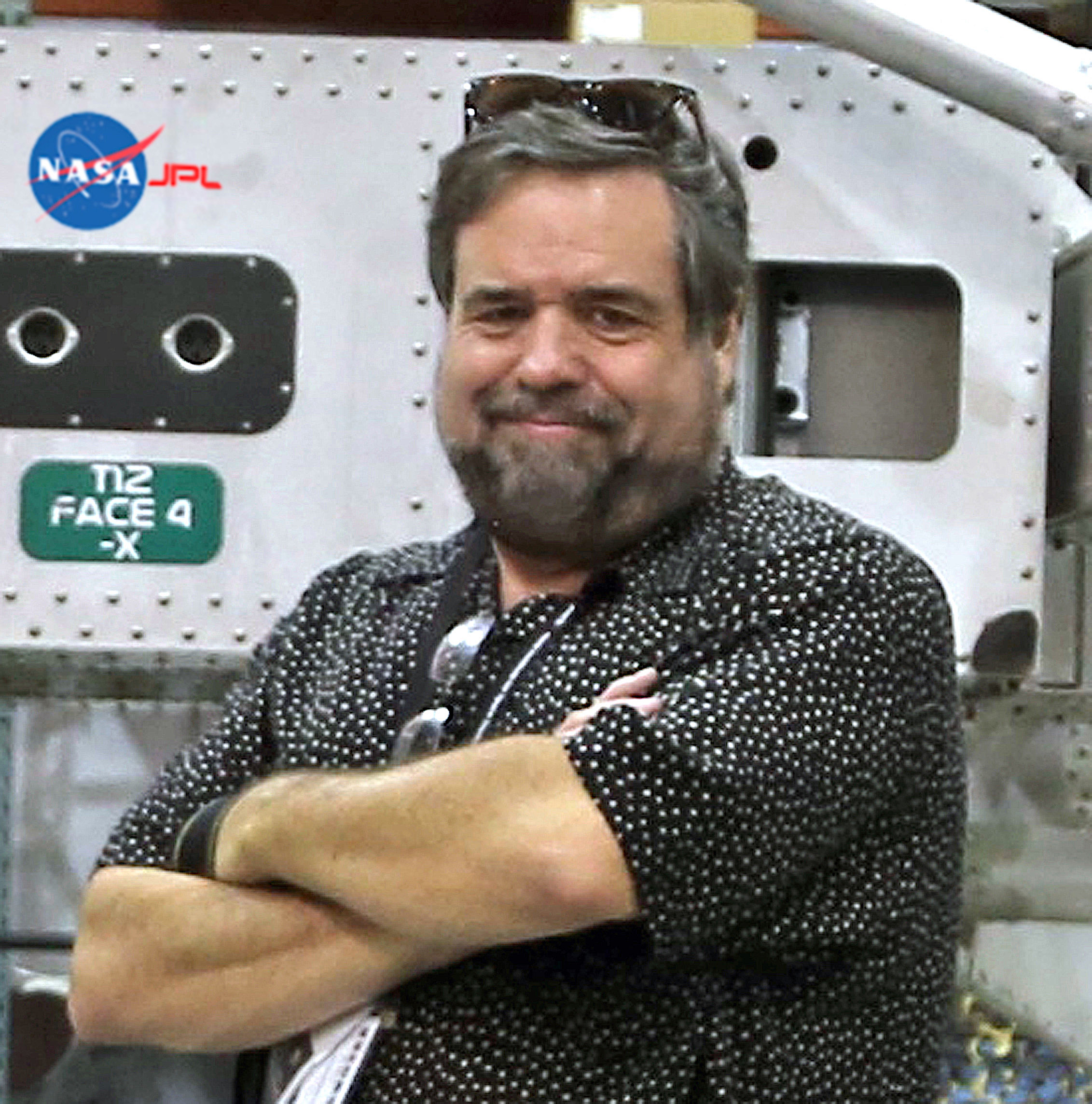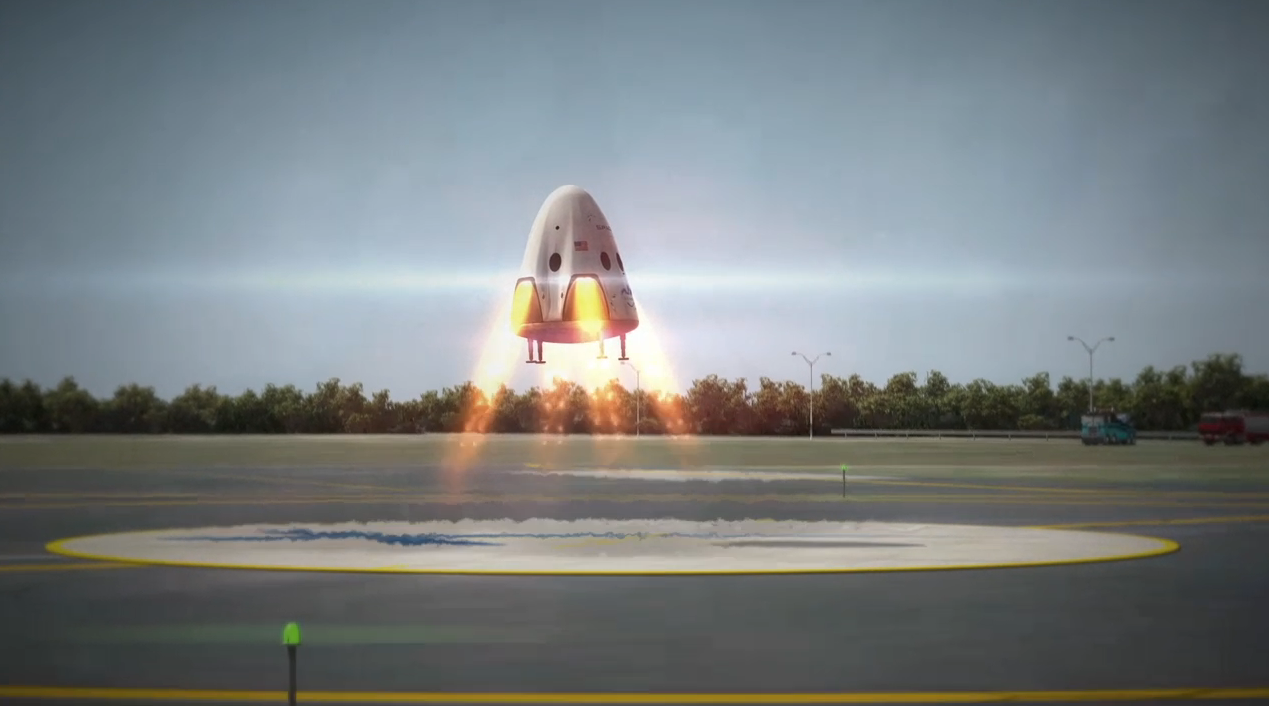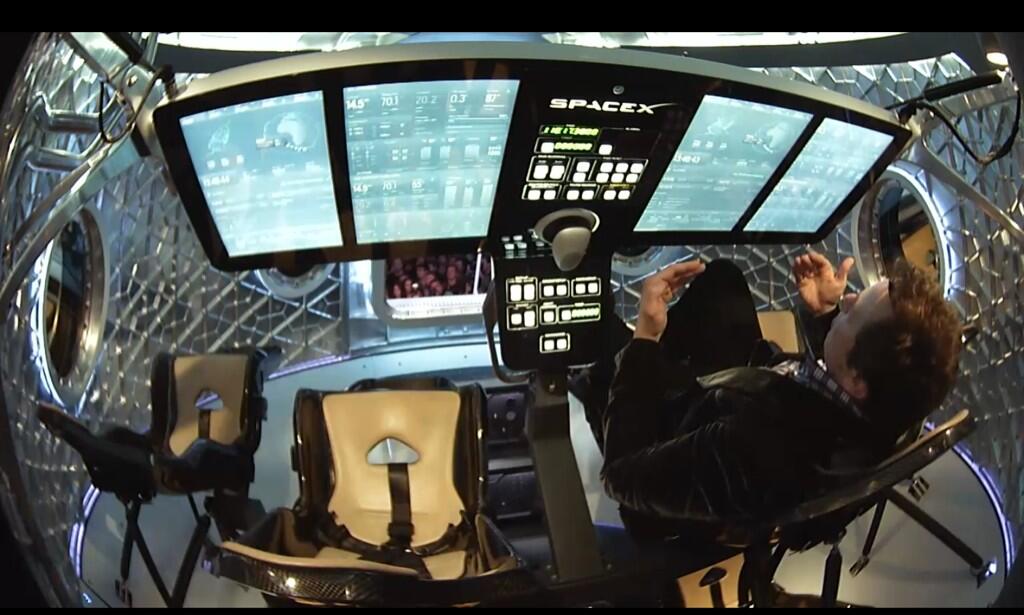Glitz, Glam and SpaceX: Inside Elon Musk's Dragon V2 Spaceship (Video)

HAWTHORNE, Calif. — In an event worthy of a Hollywood premiere, billionaire inventor Elon Musk unveiled – quite literally – his new manned Dragon Version 2 spacecraft Thursday night (May 29).
TheSpaceX plant is located in here in the old Northrop Grumman facility, adjacent to the Hawthorne Municipal Airport. But you'd never guess it upon entering. While the place was dressed for the occasion, it is clearly a stunning workplace — especially for an aerospace company.
The bars were staffed and libations flowed freely. Hors d' oeuvres were everywhere. The crowd, an assemblage of VIPs, current and future customers and reporters numbered many hundreds. Employees were also well represented, recognizable by their event-specific black polo shirts with a celebration of Dragon V2 emblazoned across the front and back. Dance club lighting and music with a thumping beat completed the festive atmosphere. Anticipation built until about 7:30 p.m., when, to loud applause and rock-concert cheers, Musk took to the stage wearing a velvet blazer and a broad smile. [SpaceX's Manned Dragon V2 Spaceship Revealed (Photos)]
"Welcome, everyone, to Hawthorne, headquarters of Space Exploration Technologies," Musk began. "We are here to unveil Dragon Version 2…"
"When we first created Dragon Version 1, we didn't really know how to create a spacecraft; we had never designed a spacecraft before." He said that this first version of the craft had a conventional approach to landing, using parachutes to splash down off the California coast. "An important step from that is to land anywhere, on land, propulsively," Musk said. "That's one of the things Dragon Version 2 will be able to do." He described the landing accuracy of the new system to be equivalent to that of a helicopter. "That's something that a modern spaceship should be able to do."
After a few more comments, and after a classic launch countdown accompanied by disco lighting, he gestured to the curtained stage behind him, and the cover fluttered away to more applause, cheers and whistles. There, in picture-perfect lighting and with a foggy mist rolling out from underneath, was theDragon Version 2.
Comparison to the first version was easy and immediate since the first Dragon to return from orbit was hung overhead, scarred sides and heat shield clearly visible. Version 2 is markedly larger, sports three large windows on and to each side of the hatch, and, most remarkably, four landing legs sprouting from the bottom. [Elon Musk: Why Dragon V2? Because 'Russians Overcharge' (Video)]
Breaking space news, the latest updates on rocket launches, skywatching events and more!
Next, a highly produced video was shown on two large screens, simulating a flight of the new craft, culminating with a rocket-braked landing on terra firma. Afterward, Elon Musk noted that the braking rockets are continuously monitored, and should there be any indication of imminent failure, parachutes would be deployed to facilitate a safe, but surely jolting, touchdown.
After the video and some more description, a set of "comically vast" stairs was rolled on-stage and he continued the tour from inside the craft.
Once the presentation was over, Musk answered questions from reporters for 45 minutes, one of the longer sessions in recent memory, with the new Dragon spacecraft behind him. Soon thereafter he ascended the stairs again and climbed inside, greeting VIPs and members of the press who jockeyed for a photo op.
The interior of the new Dragon is an exponential advancement over the previous space capsules and presents a space larger than the Apollo command module and visually not much smaller than the shuttle's flight deck. A bottom row of seats supplies room for four, while the top row accommodates three more. The interior is comfortable and relatively roomy; a Soyuz crew would gasp in envy.
Above the top row were the "glass cockpit" screens, with simulated flight software displayed. While these interactive screens control craft, critical functions are still tied to mechanical switches located at the center of the suspended console. A single joystick resides there as well, directly underneath the backlit SpaceX logo.
The control panel flips up for easy crew access. There are no wire bundles or exposed machinery evident. Soft, indirect lighting emanates from the ceiling, and while not as attractive as what Boeing has shown off with interior mockups of the CST-100, is quite serviceable. And this is, after all, real flight hardware.
The surrounding hull is beautiful, with jeweled machined-out mass reduction shapes across its surface. It's clearly meant to be reused, as this is an expensive process and, while efficient, is maddeningly labor-intensive.
Speaking of labor: the plant seems to live on a 24-hour clock. Other than a slowdown during the presentation, work continued in the vast facility even as the guests swarmed the new Dragon. There is a pulsing sense of youthful energy everywhere, fueled by a full restaurant adjacent to the workshop floor.
All too soon it was over, and the last guests and members of the press (those who had not rushed off to meet a deadline) departed reluctantly. For those of us old enough to remember the space race, there is a remarkable sense of potential at SpaceX, and it's impossible to spend time there without an almost forgotten sense of optimism about human spaceflight to take over. It was a night few in attendance will soon forget.
Follow us @Spacedotcom, Facebook and Google+. Original article on Space.com.

Rod Pyle is an author, journalist, television producer and editor in chief of Ad Astra magazine for the National Space Society. He has written 18 books on space history, exploration and development, including "Space 2.0," "First on the Moon" and "Innovation the NASA Way." He has written for NASA’s Jet Propulsion Laboratory, Caltech, WIRED, Popular Science, Space.com, Live Science, the World Economic Forum and the Library of Congress. Rod co-authored the "Apollo Leadership Experience" for NASA's Johnson Space Center and has produced, directed and written for The History Channel, Discovery Networks and Disney. For more information on the National Space Society, go to nss.org





